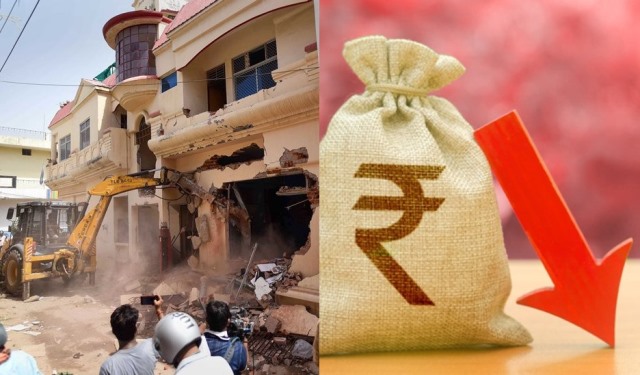Ashish Tripathi, a finance expert and a lawyer in the Lucknow Bench of Allahabad High Court, advises political parties to spare the rupee from politicking
Firstly, one thing should be clear about the Indian currency notes and coins – The Reserve Bank of India internally works out a design which is then put forth by the central board of the federal bank. The design, form, ink and material of bank notes shall be such as may be approved by the Union Government after consideration of the recommendations made by the central board.
All the politicians involved in creating a flutter on the issue are doing this just to fulfil their political ambitions and `lure’ a particular section of society. Their sole aim is to project themselves as the `messiah’ of a section of the majority community and add them to their vote bank.
All of us know the condition of the Rupee. It is trying hard to maintain a respectable stance against the US dollar and indulging in such cheap politics instead of doing your bid to assist the economy of India reflects your cheap and short term ambitions.
I will quote the example of Delhi CM Arvind Kejriwal who ignited a controversy by writing a letter to the PM. Be it the CM of Delhi or any state, he or she should first focus on achieving the goals they have set for their states welfare. For Delhi, my advice would be to clean the Yamuna, check air pollution, better traffic management, install CCTV cameras, etc, all the issues that were Mr Kejriwal’s poll promises before returning to power.
While most of his poll promises remain unfulfilled, he now wants to become the torch bearer of taking our economy to newer heights by suggesting the picture of Laxmi-Ganesh on currency notes that will, according to him, make rupee soar again.
ALSO READ: ‘AAP Trying To Beat BJP At Their Own Game’
In general, state governments should make their contribution to the Indian economy by small things like controlling VAT of fuel, maintaining the supply chain, providing a competitive environment for business, etc.
I would also like to quote an example: in 2002, a ₹10 coin having the picture of Vaishnao Devi was released and the Delhi High court was quick to observe that the Constitution of India does not permit use of any kind of religious symbol on currency notes and coins. The matter should have ended there if these so called `Desh Bhakts and Intellectuals’ had eyes and ears and minds to remain updated.
I have also come across the views of some `learned intellectuals’ quoting the example of Indonesia where (being a Muslim country) the currency note has the picture of Lord Ganesha. While such people invest so much time on the social media university brushing up their knowledge and intellect, they should know that the country was once ruled by the Chola dynasty which mastered architecture and considered Ganesha as the God of architecture and knowledge.
Do they also know that the schools and educational institutions in Indonesia have the statue/picture of Lord Ganesha? Does Kejriwal, or as a matter of fact, any other `secular’ CM or state head dare any such feet without the fear of vote bank? The answer is a simple NO.
As told to Rajat Rai

